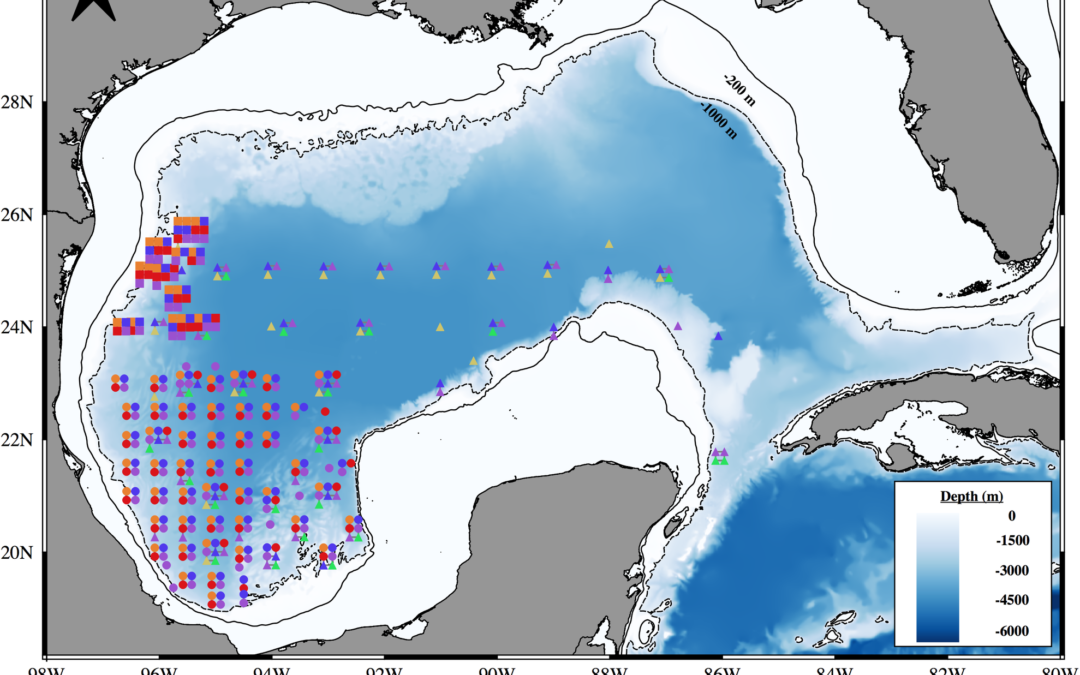Authors: Daudén-Bengoa Gonzalo, Sylvia Patricia Adelheid Jiménez-Rosenberg, Laura del Pilar Echeverri-García, María Ana Fernández-Álamo, Uriel Ordóñez-López, Sharon Z. Herzka
https://doi.org/10.1371/journal.pone.0280422
Abstract
We describe the larval occurrence and density of six fish species with contrasting life histories and examine their relationships with oceanographic variables during two seasons in the deep-water region (> 1000 m) of the southern Gulf of Mexico based on 12 cruises (2011–2018). Given that Caranx crysos adults are neritic, larval presence close to the continental shelf indicates offshore cross-shelf transport to oceanic waters, which likely leads to mortality. Generalized additive models indicated that C. crysos density was not related with oceanographic variables, while Auxis spp. (with neritic and oceanic adults) was related to wind speed, sea surface temperature, sea surface height, and surface chlorophyll a. The mesopelagic Benthosema suborbitale, Notolychnus valdiviae and Bregmaceros atlanticus were more abundant and broadly distributed, and higher density was found in conditions indicative of higher nutrient availability and productivity, suggesting greater feeding success and survival. The distribution of the epi- and mesopelagic Cubiceps pauciradiatus extended through the southern Gulf of Mexico, and was related to wind speed, sea surface temperature, stratification and chlorophyll a. Our results suggest that the density of the neritic species in oceanic waters could be mediated by regional cross-shelf transport, while for oceanic species is linked with productivity.


Recent Comments